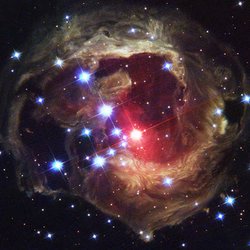Situated on the south shore of New Jersey’s Shark River lies 37 acres of land known as Camp Evans. On April 1, 2015, I was privileged to attend the dedication ceremony celebrating Camp Evans’ becoming one of only 2532 locations in the United States designated as a National Historic Landmark.
![Plaque Commemorating the Designation of Camp Evans as a National Historic Landmark. April 2, 2015. [photo: Robert Raia Photography]](https://www.stemmingthetide.net/wp-content/uploads/2015/06/NHL-Plaque-Rob.jpg)
- In 1912, Gugliemlo Marconi and his company, the American Marconi Company, constructed the Belmar Receiving Station which became part of the wireless girdle of the earth.
- In 1917, the site was acquired as part of the Navy’s World War I “Trans-Atlantic Communication System.”
- In 1941, the Army Signal Corps purchased the property to construct a top-secret research facility, and it was renamed Evans Signal Laboratory which later became Camp Evans Signal Laboratory.
- Following a visit in late October, 1953, Senator Joseph McCarthy described Camp Evans as a “house of spies.” Following an investigation that spanned 1953-1954, not one single employee was prosecuted.
But perhaps Camp Evans’ most interesting – and surprising – place in history begins with a small, informal research project taking place on a parcel of land in the Camp’s northeast corner. The ramifications of this project would ultimately give birth the to Space Age, lead to the development of the US Space Program, and start the Cold War.
Following the end of WWII, American scientists at Camp Evans continued their investigation into whether the earth’s ionosphere could be penetrated using radio waves – a feat that had been studied prior to the end of the War but had long been believed impossible. Project Diana, led by Lt. Col. John H. DeWitt, Jr., aimed to prove that it could indeed be penetrated. A group of radar scientists awaiting their discharge from the Army modified a radar antenna – including significantly boosting its output power – and placed it in the northeast corner of Camp Evans.

On the morning of January 10, 1946, with the dish pointed at the rising moon, a series of radar signals was broadcast. Exactly 2.5 seconds after each signal’s broadcast, its corresponding echo was detected. This was significant because 2.5 seconds is precisely the time required for light to travel the round trip distance between the earth and the moon. Project Diana – and her scientists – had successfully demonstrated that the ionosphere was, in fact, penetrable, and communication beyond our planet was possible. And thus was born the Space Age – as well as the field of Radar Astronomy.
![SCR-271 Bedspring RADAR Antenna Pointing at the Moon [photo: David Mofenson; InfoAge website]](https://www.stemmingthetide.net/wp-content/uploads/2015/06/d-i-030-David-Mofenson.jpg)
![60-Meter Parabolic Dish Being Constructed on Project Diana Site [photo: Frank Vosk; InfoAge website]](https://www.stemmingthetide.net/wp-content/uploads/2015/06/Dish-Assembly-1-w-Frank-Vosk.jpg)

![President Eisenhower and NASA Administrator Glennan Viewing the First Satellite Images from TIROS I. [photo: wikimedia commons]](https://www.stemmingthetide.net/wp-content/uploads/2015/06/President_Eisenhower_and_NASA_Administrator_Glennan_examine_photographs_taken_by_TIROS-1.jpg)
In addition to serving as the downlink Ground Communications Center for the TIROS I and TIROS II satellites, this same dish has also tracked:
- Explorer 1, America’s first satellite, in January, 1958 (pre-dates the launch of TIROS I), and
- Pioneer V Space Probe.
Sadly, by the mid-1970s, the technology within the TIROS dish (officially named the TLM-18 Space Telemetry Antenna) had become obsolete, and it was retired. Camp Evans was decommissioned and closed in 1993 and its land was transferred to the National Park Service. But in 2012, Camp Evans was designated a National Historic Landmark, and thus began a new, revitalized era for this immensely significant site. In addition to the TIROS Dish and the InfoAge Science History Learning Center and Museum, Camp Evans is also home to:
- The Military History Museum;
- The Radio Technology Museum;
- The National Broadcasters’ Hall of Fame.

DISH RESTORATION
In 2001, InfoAge stepped in and began preserving and restoring the mechanical systems of the TIROS dish. In 2006, a donation from Harris Corporation allowed the dish to be completely repainted and preserved.
Norman Jarosik, Senior Research Physicist at Princeton University and Daniel Marlow, PhD. and Evans Crawford 1911 Professor of Physics at Princeton, as well as countless volunteers from the University, InfoAge, Wall Township (NJ), and the Ocean-Monmouth Amateur Radio Club, Inc. (OMARC) have provided the engineering/scientific knowledge and sweat-equity required to refurbish and update the inoperative radio dish. The original vacuum-tube technology has been replaced with smaller electronic counterparts. Rusty equipment has been replaced. Seized/inoperative motors have been reconditioned and rebuilt. And system-level software controls have been added. The TIROS dish has been transformed into a truly modern, state-of-the-art Radio Astronomy Satellite Dish and Control Center.
![The TIROS Dish as it Appears Today [photo: Nancy J. Graziano]](https://www.stemmingthetide.net/wp-content/uploads/2015/06/TIROS-Dish-Today-njg-680x1024.jpg)
![The Control Console Today. [photo: Nancy J. Graziano]](https://www.stemmingthetide.net/wp-content/uploads/2015/06/Control-Console-njg-1024x680.jpg)
FUTURE PLANS
After almost 15 years of restoration and nearly 40 years since it last listened to the sky, the TIROS dish is once again operational, is detecting radio signals from the universe, and is well on its way to be used for science education.
Work continues on renovating Building 9162, the original TIROS Control Building, to convert it into the InfoAge Visitor Center. Plans include a NASA-style control room with theater seating for 20-30 students, a full-scale model of the original TIROS I satellite, and other exhibits dedicated to the history of Project Diana, the TIROS program, and the scientific impact these projects have had on our daily lives.
![Visitor Center Floorplan [credit: InfoAge]](https://www.stemmingthetide.net/wp-content/uploads/2015/06/Floorplan-1024x897.jpg)
If you are interested in visiting the InfoAge Science History Learning Center and Museum at Historic Camp Evans, they are open to the public on Wednesdays, Saturdays, and Sundays, from 1-5pm.
To learn more about Camp Evans, Project Diana, the TIROS Satellite project, and InfoAge, tune into this week’s Weekly Space Hangout. This week’s special guest is Stephen Fowler, the Creative Director at InfoAge. He will be chatting with Fraser about the history and plans for Camp Evans and the TIROS dish.
Still want to learn more? Click on any of the links provided in this article, or visit the following sites:

